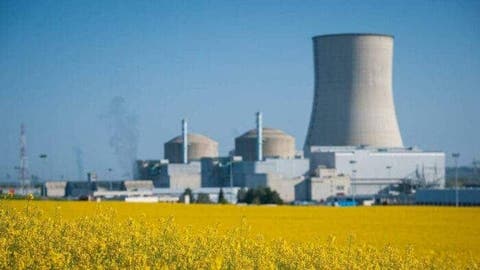China has been leading the world in clean energy production and investment for several years. The country has made huge strides in transitioning to a more sustainable, secure, and inclusive energy future. Large American firms lag far behind their Chinese rivals in generating revenue from solar, wind, nuclear and other types of renewable energy. According to data from Bloomberg New Energy Finance (BNEF), a US energy industry research organization, China dominates the clean energy market. The report reveals that China ranks first with a revenue of $707 billion last year. This is far ahead of the U.S. which got a revenue of only $398 billion. This article will explore China’s dominance in the clean energy market and the factors contributing to its success.
China’s Clean Energy Leadership
China has emerged as the world leader in renewable energy, with the largest domestic and outbound investment in renewable energy. The country is the world’s largest producer of wind and solar energy and leads the world in renewable energy production figures. China has invested heavily in clean energy, spending $546 billion in 2022 on investments. This funding went for solar and wind energy, electric cars, and batteries. This funding is nearly four times the amount of U.S. funding, which totalled $141 billion. China also dominated in low-carbon manufacturing. It accounts for over 90% of the $79 billion invested in that sector last year.
Among S&P 500 companies, clean energy revenue accounts for only 3.4% of their total revenue. This is about half of the clean energy revenue of Shanghai Composite Index companies. Bloomberg New Energy Finance estimates that more than 680 companies in the Asia-Pacific region generate more than half of their revenue from clean energy. This includes renewable and nuclear energy, electrified transportation, biofuels, hydrogen and carbon capture. By comparison, there are nearly 410 firms in the United States. Europe, the Middle East and Africa combined have just about 430 firms.
Factors Contributing to China’s Success
Several factors have contributed to China’s success in the clean energy market. One of the main factors is the Chinese government’s commitment to clean energy. The government has prioritized measures, laws, and policies to reduce coal use and develop renewable energy, especially solar and wind. The government has also spent heavily to upgrade the electricity grid, putting no less than $45 billion in a single year. State-owned banks provide generous financing for clean energy projects and this helps in no small way.
Another factor contributing to China’s success is its domestic demand for electricity. China’s biggest advantage may be its domestic demand for electricity, rising 15 per cent a year. To meet demand in the coming decade, China will need to add nearly nine times as much electricity generation capacity as the United States. This huge demand has created a large market for clean energy. This has allowed China to develop its clean energy industry.
China’s clean energy leadership is also signalled by its robust job creation in the clean energy sector. China has created many jobs in the clean energy sector. This also extends to the renewable energy industries in China which are adding jobs rapidly. According to the government-backed Chinese Renewable Energy Industries Association, renewable energy industries in China reached 1.12 million jobs in 2008 and are climbing by 100,000 a year.
Impact of clean energy
The move to clean energy is a positive direction that the world needs to follow. The move into the new energy sector will not only benefit the earth but also create huge economic benefits. According to Michael Daly, an analyst at Bloomberg New Energy Finance, “The transformation of corporate business models to greener businesses is not just about the noble purpose of protecting the planet. It is also a huge economic opportunity for companies helping to drive the energy transition.”
In the automotive industry, Tesla and BYD are clearly new energy leaders. They are far ahead of regular car brands such as BMW and Ford Motor. Looking ahead, Dailey said, “With the release of more models and the launch of new policies to support electric cars, we expect regular car makers in the lagging group to increase the proportion of their electric car business.”
Environmental impacts:
- Clean energy does not produce harmful emissions that lead to climate change.
- Renewable energy sources emit little to no greenhouse gases.
- Using more renewable energy can lower the prices of and demand for natural gas and coal.
- Creating electricity from clean energy sources like wind and solar reduces the need for fossil fuel power. This will also lower emissions of harmful gases like nitrogen oxides, sulfur dioxide, and carbon dioxide.
Health impacts:
- Clean energy technologies produce almost no harmful emissions that are linked to numerous health problems.
- Clean energy prevents air pollution, which makes the air safer to breathe, leading to better health and lower healthcare bills.
- It also protects the fundamental human right to a healthy, safe environment.
- Using clean energy can reduce the risk of some serious medical conditions
Economic impacts:
- Clean energy benefits the economy by creating jobs and stimulating economic growth.
- Using clean energy can lower energy costs and increase energy independence.
- Local governments can lead by example by generating energy on-site. This can help them to meet their goals and reduce their carbon emissions.
Final Words
China’s dominance in the clean energy market is a result of its commitment to clean energy, generous financing, and high demand for electricity. The country has invested heavily in clean energy. This makes it the world leader in clean energy production and investment. China’s success in the clean energy market has created many jobs in the clean energy sector. It has also allowed the country to transition to a more sustainable, secure, and inclusive energy future.
